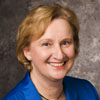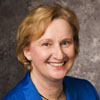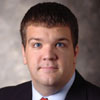SMU professors chart undecided voters' reactions to debate
Professors Rita Kirk (left) and Dan Schill run focus groups whose opinions about Wednesday night's debate are broadcast live.

By BLANCA CANTÚ and DAN X. McGRAW
The Dallas Morning News
 Rita Kirk |
 Dan Schill |
For the next 20 days, pundits and spin artists will speculate about whether the messages from John McCain and Barack Obama are resonating with voters.
Tonight, two professors from Southern Methodist University will show CNN viewers what some undecided voters are thinking – in real time – as the two candidates square off in their final debate.
Professors Rita Kirk and Dan Schill run focus groups of voters whose opinions about the candidates are recorded on line graphs broadcast throughout debates. Tonight's participants – about 30 undecided voters from Ohio – will turn up the dial on handheld devices when they like what they hear. They will turn it down when they're dissatisfied.
Dr. Kirk said traditional debate coverage focuses on one-liners and moments of conflict. Using dials and broadcasting the results offers viewers a sense of what divides people in real time.
"The bottom line is we ask the question, 'Do words matter?' " Dr. Kirk said.
No one knows how – or even if – broadcasting the results of the dial-testing will influence voters come Nov. 4. Critics question the usefulness of the technique.
Charles Franklin, who co-founded Pollster.com, said the line graph is distracting, confusing and doesn't provide the viewer with an unfiltered view of the debate.
"I suspect a lot of people don't know what to make of them," said Dr. Franklin, who is also a University of Wisconsin political science professor.
But Dr. Schill said watching how others react to the candidates encourages people to reflect on their own responses.
"While some may be distracted by it, it's equally likely that other viewers will be drawn in to it and react positively," he said. "How a debate affects viewers at home is complex, multi-dimensional and dependent on countless factors."
Among other things, they have learned that participants want candidates to follow the debate rules, Dr. Kirk said. When they don't, they dial them down. Attacks aren't favored either.
"They want the candidate to be specific," she said. "You have regular voters now training the candidates on 'how you speak to me.' "
The two professors approached CNN about conducting dial-testing research before the primaries. The focus groups' reactions have been broadcast live since the first McCain-Obama debate. Dr. Kirk declined to comment on the team's compensation, but she said the deal is a win for the professors because they plan to publish the results of their research in a book next year.
CNN Washington, D.C., bureau chief David Bohrman said he doesn't think the results sway voters' opinions. CNN is the only national network broadcasting real-time focus group responses.
"I just think it's interesting that people want to test their perception," he said. "There is an intellectual wall to push off against."
But Steven Fein, a psychology professor at Williams College, said his research on dial testing showed that students who viewed clips of a debate between Ronald Reagan and Walter Mondale overwhelmingly turned their dials to follow the crowd.
"Most of them said it didn't affect them, but it did," he said.
Dr. Fein said his studies only measured people's opinions on a particular day – not their long-term opinions.
But Dr. Kirk said their research helps show how voters react to information and ultimately make decisions.
"We know that attitude is a precursor to action," Dr. Kirk said. "We're not trying to claim that the debate is the only thing that influences somebody's decision, but it is one of the things that can enter into the decision process and in some cases, it will be the final thing that edges them over to make a decision."
# # #